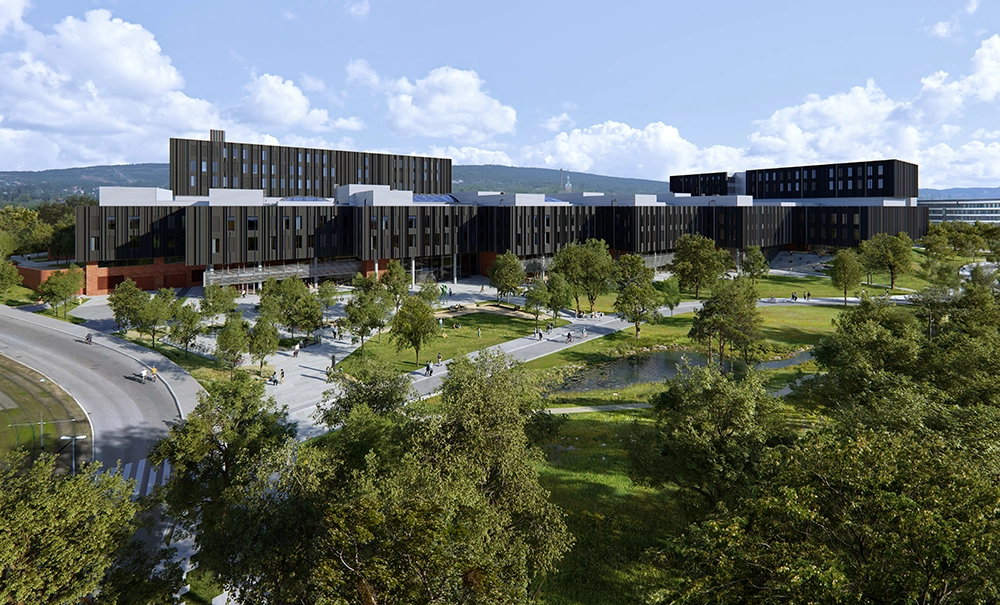The life science building will be a common building for leading university and hospital environments within life sciences.

The planned building for chemistry, pharmacy, life sciences and laboratory medicine is to be completed in 2026. With its 97,000 m2, it will be Norway's largest university and hospital building.
The building will be located in Gaustadbekkdalen, a short distance from research environments at the University of Oslo and Oslo University Hospital (OUS). Collaborating research institutions and businesses will get access to use the building's facilities. The life sciences building will be the core of Norway's first innovation district - Oslo Science City. Read more about Oslo Science City (link to external website).
Extensive interdisciplinary collaboration – convergence – will produce groundbreaking research
The life sciences building is a concept building, planned based on the principle of convergence - the building's architecture and solutions facilitate extensive interdisciplinary collaboration. Groundbreaking research occurs when different thoughts and ideas meet across subjects and research areas. Interdisciplinary research collaborations are becoming increasingly important in responding to the challenges we face. Be it the handling of infectious diseases (pandemic), an aging population (public health), or a more sustainable society (green shift).
Better education for the future labour force
Interdisciplinary collaboration and convergence are also important for enhanced education in life science. It will be the current generation of competent students and young researchers who will create the new, sustainable products, services and jobs in new, greener industrial fields such as health and the marine sector – areas that Norway needs to bolster.
Closer collaboration to strengthen the entire Oslo region
The new building will also permit UiO to make better provisions for close cooperation with other links in the value chain, from basic research to application. Thus, we can reach the objective of higher quality and relevance in research and education, along with better utilization of the innovation potential in research.
The modern scientific equipment and infrastructure will be available to the outside world as well. The building is also intended to serve as a meeting place for students, research fellows, post-doctoral scholars and researchers from all of UiO and other research institutions, health enterprises, municipalities and the life-science business sector.
More success stories
The University of Oslo wants more success stories like that of Algeta, the company that developed a new pharmaceutical product for treatment of prostate cancer and sold it to the German pharmaceutical giant Bayer for 17.6 billion NOK in 2014. The company was based on interdisciplinary collaboration and has created jobs both in Norway and abroad.
The University of Oslo’s innovation company Inven2 already has several promising start-up companies in the life sciences. Inven2 is co-owned with the Oslo University Hospital. With the University of Oslo’s commitment to life science – UiO:Life Science – the university is working to reach its goal: more successes.